Chinese Cuisines
Chinese cuisines originated from the various regions of China, and has become widespread in the world. With the great differences in the climate, geography, history and culture of different regions, Chinese cuisine culture is extensive and profound with unique characteristics. China has local cuisine, imperial dishes, and dishes of ethnic minorities, such as, Islamic dishes with a strong religious flavor and vegetarian dishes.
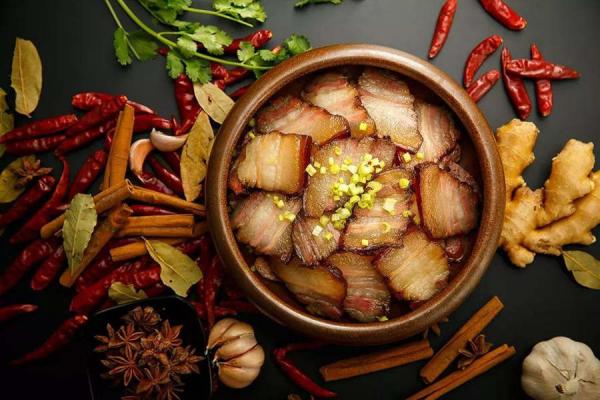
China is divided into 34 provinces, each with its own distinct culinary heritage that reflects its unique geography, climate, history and culture. Cooking styles are inspired by fresh, local ingredients and spices. Generally Chinese cuisine is classified into four schools (the north, south, east, and west), which are further divided into eight main regional cuisines: Anhui, Guangdong, Fujian, Hunan, Jiangsu, Shandong, Sichuan, and Zhejiang. There are also featured Buddhist and Muslim sub-cuisines within the greater Chinese cuisine, with an emphasis on vegetarian and halal-based diets respectively.
Chinese Cuisine is Noted for the Following Characteristics:
Four Flavors
Importantly, cuisine in China is always appreciated through all the senses. A dish is first judged for its appearance and aroma, then its taste and texture. And a good-quality dish should have one of the following characteristics or a combination of several.
1. Xian (鲜) - the natural, heightened flavor of ingredients, such as the sweetness of prawns, or the taste of high-quality butter.
2. Xiang (香)– a fragrant aroma found in dishes that combines smell and taste harmoniously.
3. Nong (浓) - the richness of a sauce; a concentration of flavor.
4. you er bu ni (油而不腻) - the taste and texture of fat without greasiness of stodginess or stodginess.
For travelers, there has never been a more exciting time to eat in China. Easy Tour China offers several "China culinary tours" for choice. There would be great opportunities for visitors to try a variety of regional dishes, as well as participate in cooking classes.
Vegetables are the main ingredients.
This explains why most Chinese women are slim and men free of cardiovascular diseases. This is because in China, an agricultural country, there is a traditional respect for land. As the old saying goes, "Live on the mountain if you live in one and live on water if you live by water". The Chinese are meticulous about food preparation. Whether it is pastries or vegetables, they always try to make it tasty and flavorful. For example, beans, a common vegetable, are exquisitely prepared into such delicious dishes as bean sprouts and bean curd.
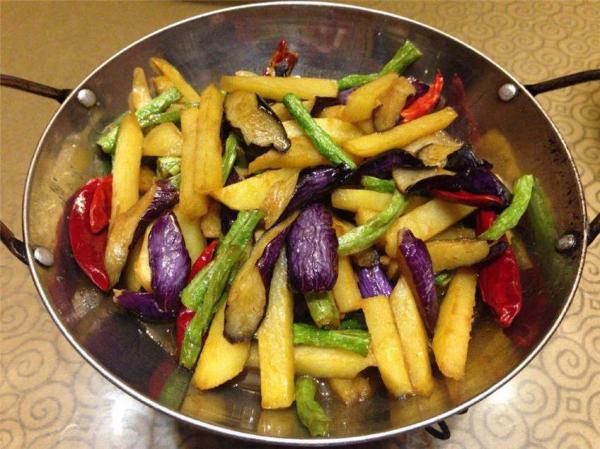
The Chinese people like well-prepared food.
Zealous about food absorption and digestion, they are scrupulous about the temperature while cooking. Undercooked food is unacceptable to them. To the Chinese, the sight of Westerners eating undercooked steaks still oozing blood inside is horrible. In addition, warm soup is very important. Wonton, or dumpling soup, and noodles are popular nationwide. Other hot soups include jellied bean curd, rice porridge and corn porridge.
Chinese also like to eat together, a tradition that can be traced back a long time ago.
It reflects the Chinese notion of union versus division---round tables, round dishes, and round bowls all symbolize union and perfection. Dishes are usually placed at the center of the table so that everyone around the table can share them. A hot pot, in particular, adds to the atmosphere of harmony and union. Friends eat and live together. A recent book by an American Sinologist held that the Chinese collective tradition developed out of the practice of eating together.
Tea drinking is an integral part of Chinese life and the Chinese food experience. Tea is believed to be good for you. The Chinese were the first to discover the tealeaf and have been drinking tea ever since in many varieties.
Recommended private customized China Food Tours:
15-day China Cooking & Foodie Tour
Anhui Cuisine (徽菜)
Anhui cuisine originated from the Qin and Han dynasties, flourished in the Tang and Song dynasties, and flourished in the Ming and qing dynasties. Jixi County in Xuancheng City has been awarded the title of "hometown of anhui cuisine". Anhui Cuisine chef may stress the temperature in cooking and are good at braising and stewing. Often ham will be added to improve taste and candied sugar added to gain freshness. There are now more than 3000 dishes of Huizhou cuisine, with the most famous ones including Huizhou rice bone soup, ham simmered with soft-shelled turtles, Huangshan stewed pigeon, pickled fresh mandarin fish...
Hunan Cuisine (湘菜)
Hunan Cuisine is known for its hot and spicy dishes. Chili, pepper and shallot are necessities with thick and pungent flavor for Hunan food. It focus on the cooking methods of simmering, stewing, waxing, steaming and frying. Famous Hunan Cuisine dishes include chopped pepper fish head, chili Fried meat, grandma's food in western hunan, jishou sour meat, beef powder, etc.
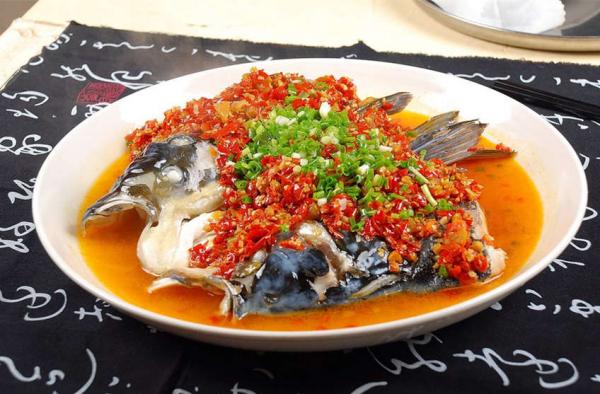
Cantonese Cuisine (粤菜)
One of the most famous Chinese cuisines, Cantonese cuisine consists of Guangzhou cuisine (also known as Guangfu cuisine), Chaozhou cuisine (also known as Chaoshan cuisine), and Dongjiang cuisine (also known as Hakka cuisine). Guangdong cuisine tastes clean, light, crisp and fresh. Its basic techniques include typically steamed, braising, boiled or stir-fried. The main ingredients of this type of Chinese food are seafood, pork, chicken and vegetables, but could include almost anything. It is a very healthy food since it uses minimum of oil. Famous Cantonese dishes include white cut chicken, roast goose, roast suckling pig, braised squab in brown sauce, honey roast pork, crispy roast meat, dim sum...
Fujian Cuisine (闽菜)
The mixture of the Han cuisine culture of the central plains and the Yue cuisine culture of ancinet Fujian region, Fujian Cuisine is renowned for its seafood, beautiful color and magical tastes of sweet, sour, salt and savory. The most distinct feature is their pickled taste. Such a taste combines Fuzhou Cuisine, Quanzhou Cuisine, and Xiamen Cuisine.
Shandong Cuisine (鲁菜)
Shandong Cuisine (Lu Cuisine) ranks first of the top eight Chinese cuisines. It originated in Boshan district, Zibo City, Shandong Province. The Confucian school in Shandong established the aesthetic orientation of fine, moderate and healthy diet in China 2,500 years ago and blend the Chinese cooking techniques of the middle and lower reaches of the Yellow River, from steaming, boiling, roasting, brewing, frying, frying, boiling, and steaming to frying Shandong Cuisine clean, pure and not greasy, is characterized by aroma, freshness, crispness and tenderness. Shallots and garlic are frequently used as main seasonings. Jinan chefs are adept at deep-frying, grilling, pan-frying and stir-frying while Jiaodong chefs are famous for cooking seafood, tasting fresh and light. Classic dishes include steamed tofu stuffed with vegetables , sea cucumber with scallion, shark's fin with three fillets, white steak with four treasures, yellow carp with sweet and sour sauce...
Sichuan Cuisine (川菜)
Thes most famous Chinese cuisine, Sichuan Cuisine consists of Chengdu cuisine, Leshen Cuisine, Chongqing Cuisine, Yibing Cuisine, Yanbang Cuisine and Neijiang Cuisine. The typical Sichuan Cuisine tastes spicy. Many Sichuan dishes are prepared using chili pepper oil, which gives a special taste to the food. The most famous Sichuan dish is the Gongbao (Kung Pao) chicken, fried with peanuts and chili pepper, shredded pork with garlic sauce, Mapo tofu, double-fried pork, hot pot. >> Best places to enjoy the hot & spicy Food in China
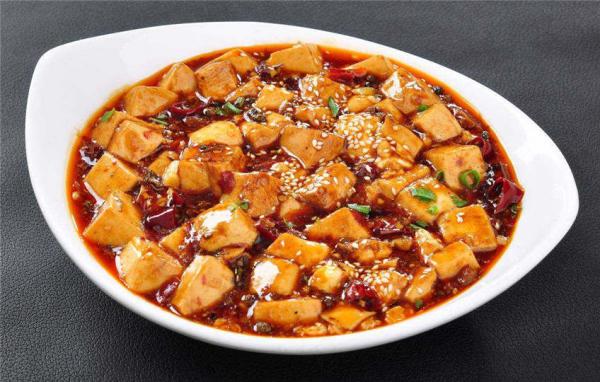
Zhejiang Cuisine (浙菜)
There is an old saying goes that "Heaven above, suzhou and hangzhou below". Zhejiang is located beside East China sea, rich in various kinds of food materials, especially aquatic resources, such as yellow croaker, hairtail, grouper, brocade lobster and oyster, clam, shrimp, crab from the famous zhoushan fishing ground, and mandarin fish, carp, shrimp, lake crab from Taihu Lake. Zhejiang Cuisine is not greasy. It wins its reputation for freshness, tenderness, softness, and smoothness of its dishes with their mellow fragrance. Hangzhou Cuisine is the most famous one among them. Classic dishes include West Lake Fish in Vinegar Gravy, Braised Dongpo Pork, West Lake Water Shield Soup, stir-fried shrimps with Longjing tea, etc.
Jiangsu Cuisine (苏菜)
Jiangsu Cuisine, with a history of over 2000 years, also called Su Cuisine, is popular in the lower reaches of the Yangtze River and consists of Nanjing cuisine (formerly known as Jinling cuisine), Huaiyang cuisine, Suzhou cuisine, and Xuhai cuisine. Jiangsu Cuisine tastes light, fresh and sweet. Fish and crustaceans are the main ingredients. Cooking techniques consist of stewing, braising, roasting, and simmering. Famous Jiangsu Cuisine dishes include Jinling roast duck, old duck soup, stewed raw pork, roast square, crystal dishes, braised crab powder lion's head...
Medicinal Cuisine (药膳)
Medicinal cuisine is also called therapeutic food. It is an important part of Chinese cooking. Master Chefs have developed food therapies by combining cookery and traditional Chinese medicine. Famous medicinal dishes include lily and chicken soup, shrimp meat with pearl powder, tianfu carp, duck braised with soy sauce and orange peel, and steamed dumplings stuffed with minced meat and poria coccos, a medicinal plant.
Vegetarian Cuisine (素菜)
Vegetarian Cuisine became popular in the Song Dynasty (960-1279) and developed further in Ming and Qing (1368-1911) dynasties. It is made of green vegetables, fruits, edible fungi, and bean products, and cooked in vegetable oil. Vegetarian dishes are tasty, nourishing, and highly digestible. >> Explore best China Vegetarian Tours
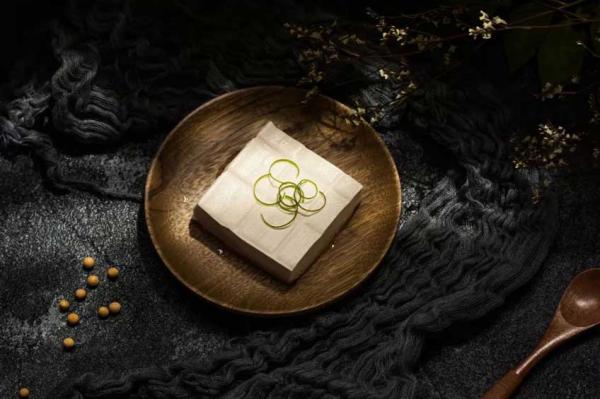
Muslim Cuisine (清真菜)
Muslim dishes became popular at the time when Islam spread to China. The most representative dishes include instant-boiled mutton, fried mutton pieces, mutton shashlik, fried rice with mutton, dumplings with fillings of mutton, cakes braised with mutton, and beef-entrails soup.